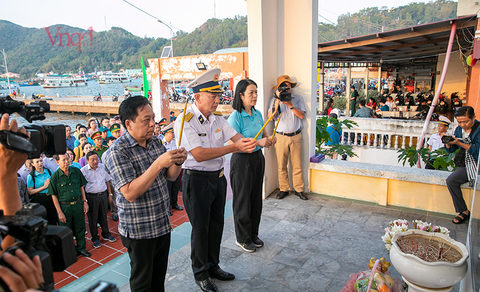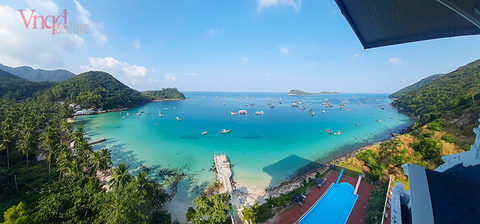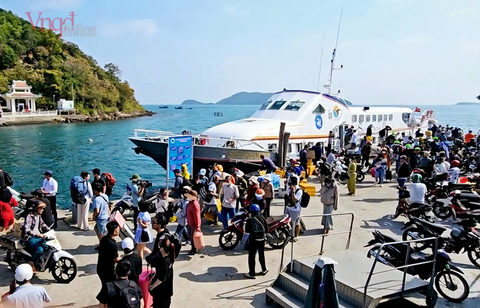Once scarred by one of Vietnam’s deadliest maritime disasters, Nam Du Island in the southwestern sea has transformed from a site of sorrow into a vibrant symbol of resilience and tourism potential.
In 1997, a devastating typhoon struck the island, claiming hundreds of fishing vessels and lives. More than two decades later, Nam Du has rebuilt itself into a vital outpost of economic and strategic importance. Alongside Phu Quoc, Tho Chu, Hon Khoai, Hon Chuoi, and Hon Doc islands, it forms part of Vietnam’s frontline island chain in the southwest.
During a recent working trip led by Colonel Luc Duc Tien, Deputy Commander of Naval Region 5, a delegation paid tribute at the island’s memorial to storm victims - an enduring reminder of the human cost of life at sea.

A delegation led by Colonel Luc Duc Tien, Deputy Commander of Naval Region 5, visits Nam Du Island to offer incense at the memorial honoring victims of Typhoon Linda in 1997.
Guarding the island and supporting local communities are the servicemen of Radar Station 600, Regiment 551, under the command of Naval Region 5.
Major Hoang Van Thuan, Political Officer of the Radar Station 600, affirmed the unwavering mission to safeguard national sovereignty and protect fishermen operating in the area.
Echoing this commitment, Lieutenant Colonel Dang Huu Phung, a veteran power technician with nearly 30 years on various southwestern islands, highlighted the island’s transformation, emphasizing the vital role of vigilance in upholding maritime boundaries.

A quiet corner of peace remains on Nam Du Island.
Sergeant Mai Chi Nguyen, newly deployed to Nam Du in 2024, spoke of his first encounter with the solemn responsibility of island defense, describing it as both a privilege and a duty.

Nam Du has been revitalized, with ferry routes now connecting the island to the mainland - paving the way for a thriving tourism industry and renewed economic potential.
Today, Nam Du blends natural beauty with strategic significance - its peaceful fishing villages and pristine beaches standing as testaments to human resilience and national pride in the face of nature’s fury.
Translated by DO HUONG
VNQD